Like all large cities, London is constantly in both a state of being and a state of becoming, as symbolized by the picture above. It's not hard to find if you're looking not only at where you're going, but what's along the way. Getting there is half the fun.
And London is so vast that getting to all of it is impossible, even in an entire lifetime, much less visits of a week or so every few years. And even after following each visit with several topical blogs, there's always more to share; here's a gallery of noticings from early summer 2018.
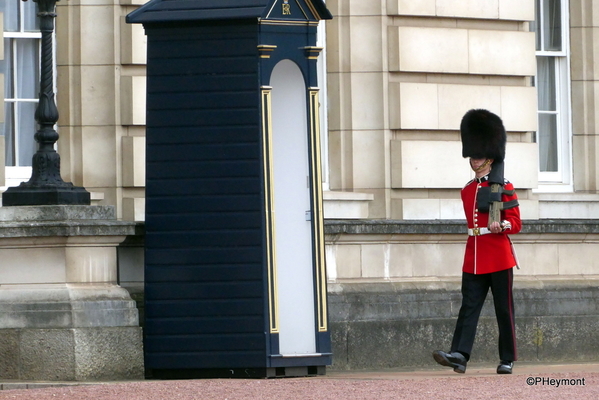
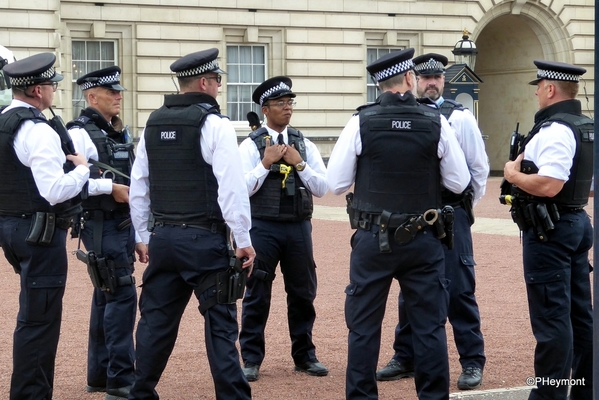
The guards at Buckingham Palace, both the decorative ones, and the ones who keep the premises under control.
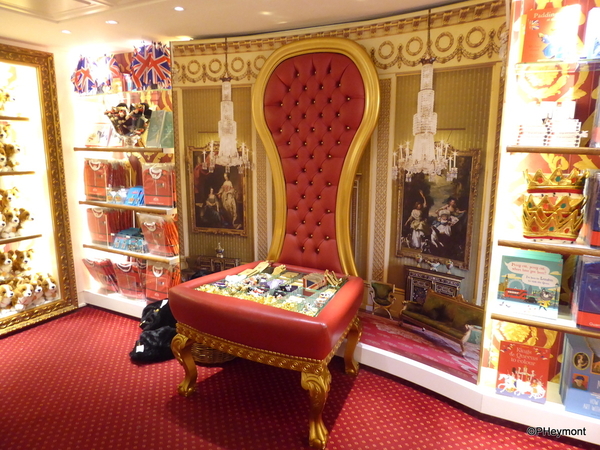
Speaking of Buckingham Palace, this is part of the Queen's own gift shop (yes), housed in a former stable at the Palace, and offering all manner of royal stuff, including replica fruitcakes from the Harry and Meghan wedding.
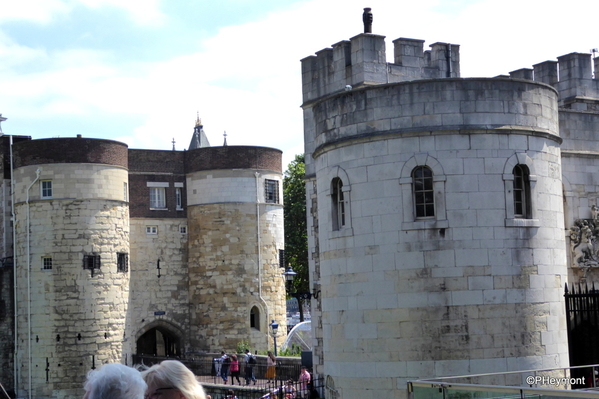
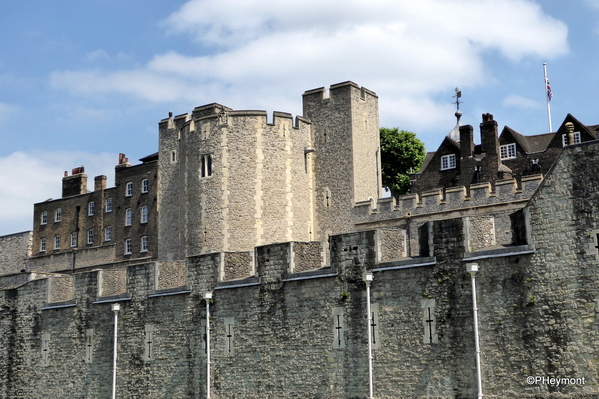
The Tower of London's a famed and familiar fortress, but how many people are aware of its animal connections, both avian and beyond. The ravens are a well-cared for fixture, while the various other animal images are a reminder of nearly 600 years of exotic animals kept by the monarchs from the 13th century to the 19th. The first, an elephant, was a gift in 1255 from the King of France.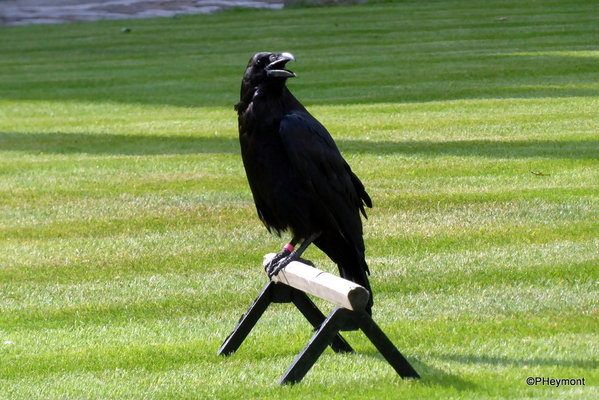
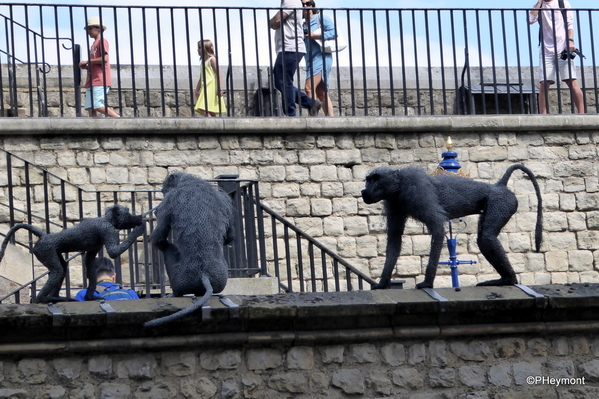
Our visit to the Tower gave our granddaughter a chance to hear the colorful story from a storied Beefeater, and gave us a rare glimpse of Tower Bridge raised with the Tower grounds in the foreground.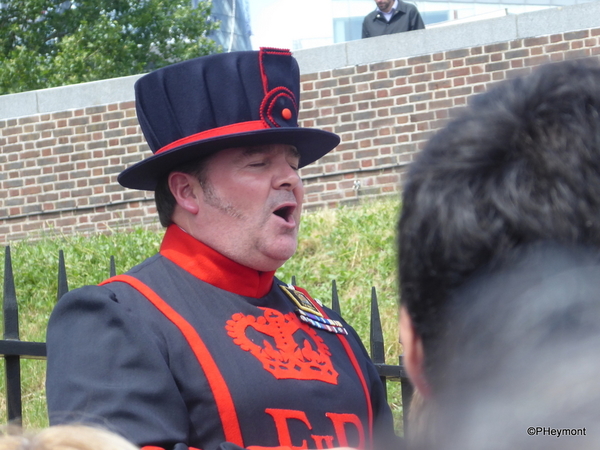
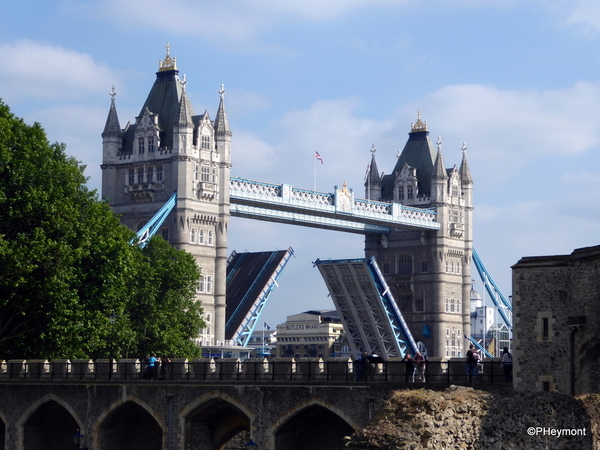
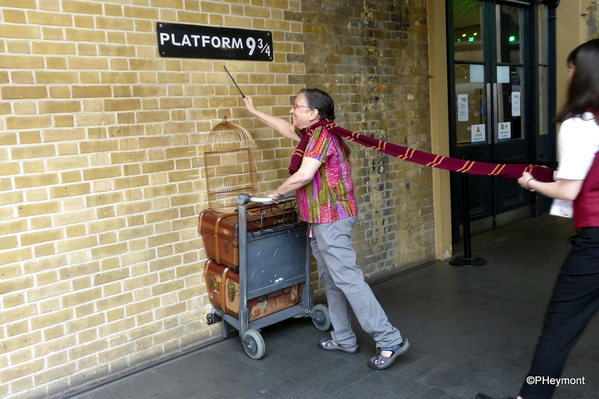 On the newer side, a bit of 'invented history.' At Kings Cross station, site of a major Harry Potter store, long lines of young and old were waiting to have their pictures taken on the way to the Hogwarts Express, with a little staff help (meant to be unseen) in keeping the house scarves flying.
On the newer side, a bit of 'invented history.' At Kings Cross station, site of a major Harry Potter store, long lines of young and old were waiting to have their pictures taken on the way to the Hogwarts Express, with a little staff help (meant to be unseen) in keeping the house scarves flying.
Of course, the Harry Potter stuff is not the only fantasy in town; here's a statue by Bushra Fakhoury, called Dunamis installed in 2013 at Hyde Park Corner. It depicts a strongman balancing an elephant by its miraculously rigid trunk. Wonder why? Here's the artist's explanation:
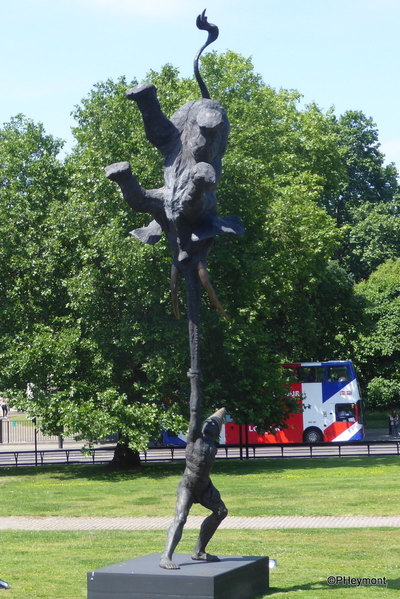 “It symbolizes human struggle to achieve excellence, pushing boundaries to make the impossible possible. We need to prioritise, work positively, and relentlessly towards reaching our goals, and dreams.
“It symbolizes human struggle to achieve excellence, pushing boundaries to make the impossible possible. We need to prioritise, work positively, and relentlessly towards reaching our goals, and dreams.
"Holding the elephant in a high position gives homage to the traits that we share and gradually forget, such as family ties, solidarity, compassion and co-operation. The ‘pointy hat’ represents the knowledge through the ages.
"We may not have the extraordinary memory of the elephant, but we need to remember to support the survival of the endangered species.”
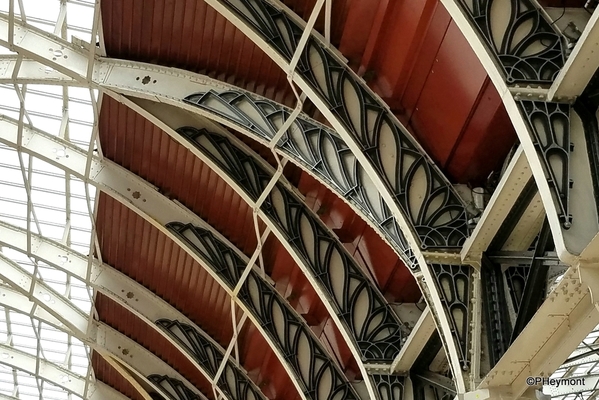
In a more concrete realm (was the pun intended?) details of London's larger things often yield worthwhile views. Above, the arches of Paddington Station, designed in the 1840s by England's great engineer I. K. Brunel, look almost modern, while the gentler arches of the much older crypt of St Martin's in the Field speak age, with just as much grace. Below them, an exuberant use of color brings out the best at the National Gallery.
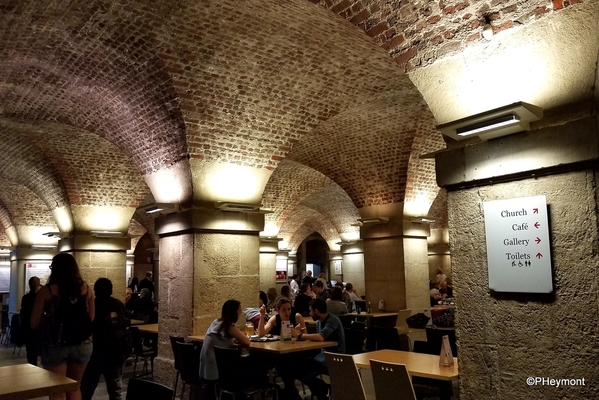
The Cafe in the Crypt offers a selection of pleasant meals—great if you're waiting for one of the many concerts that take advantage of the church's incredible acoustics.
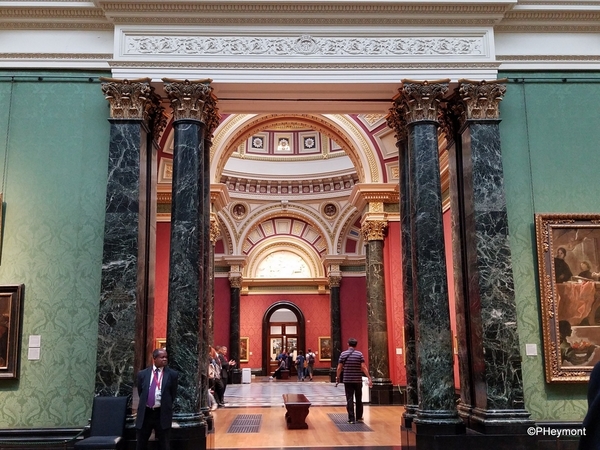
London food places quite a few with whimsical names, such as the coffee shop below and the restaurant below that, which serves, well, English food, including this bread pudding that brought us in twice.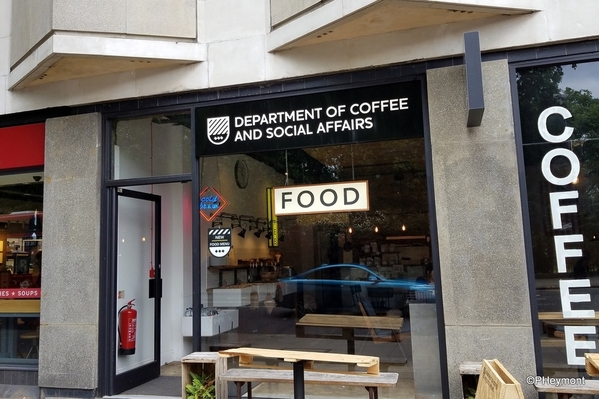
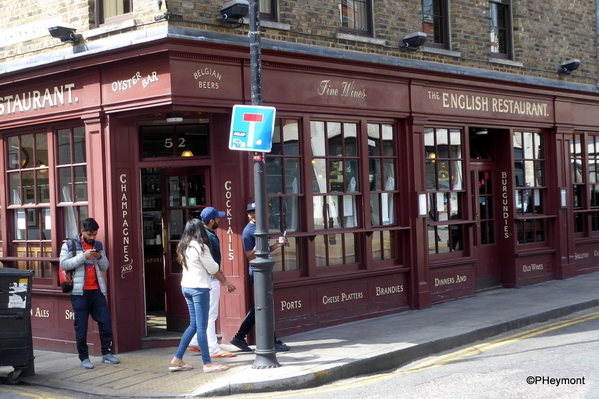
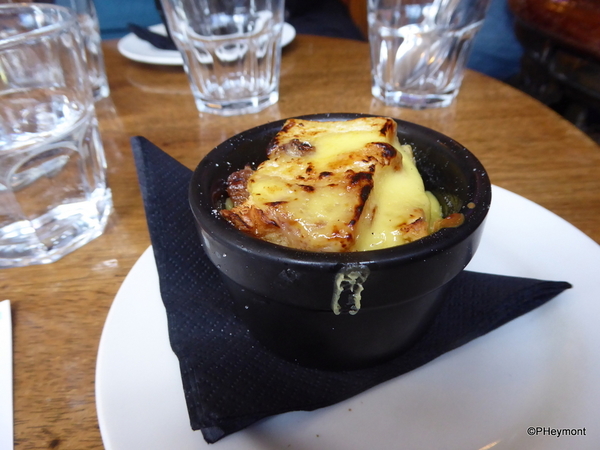
Some of our favorite London food came from markets, including the Old Spitalfields Market, in existence for centuries and the Borough Market, where foods of all kinds and the best jelly doughnuts in the world (IMHO) are available at Bread Ahead.
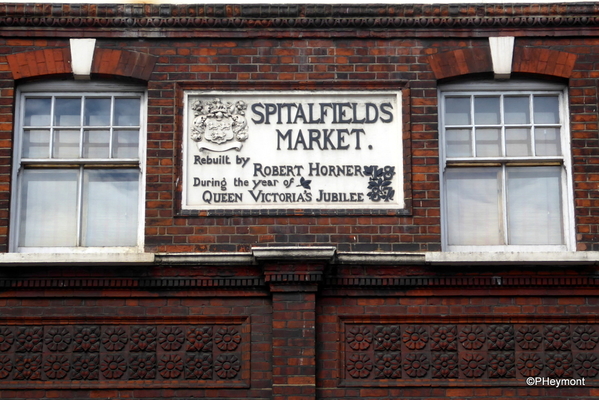
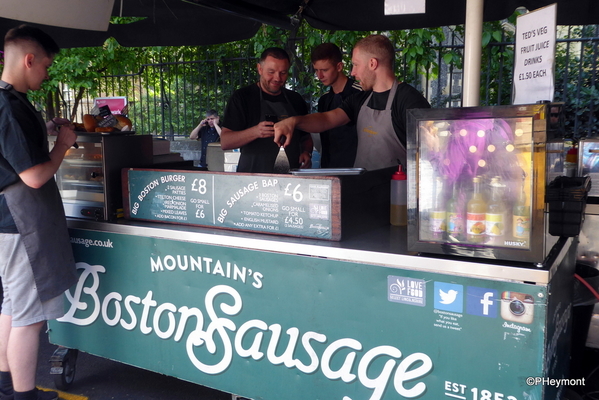
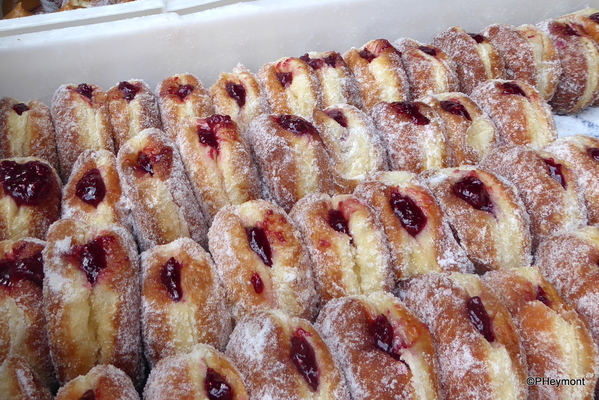
Of course, markets are good places to find good signs...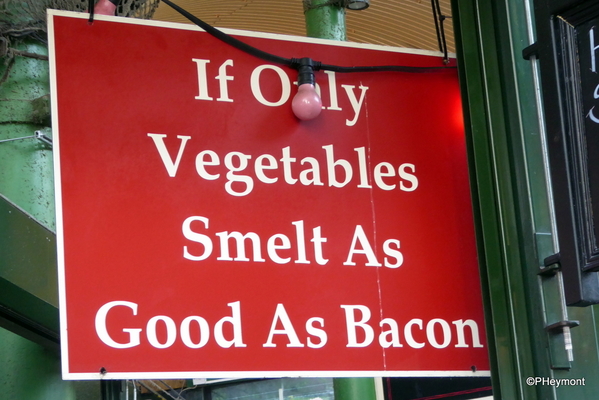
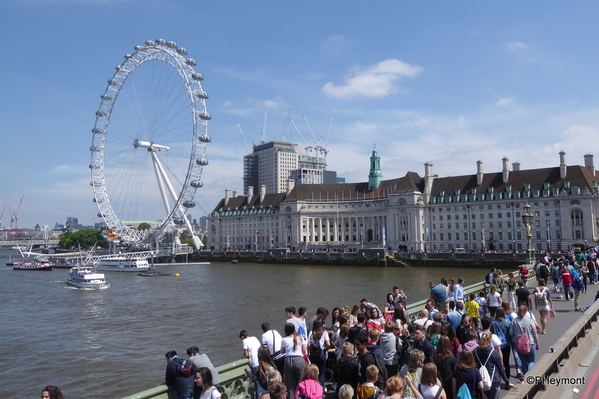
Keeping an eye on The Eye, these pedestrians get a good view crossing the Thames, while those below get a good spot to take a break, on the steps of the National Gallery.
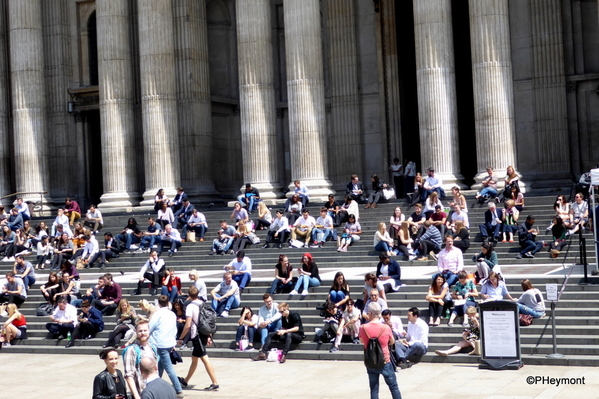
And here are some sample of the sort of art you won't find in the Gallery. These are mostly from East End streets.
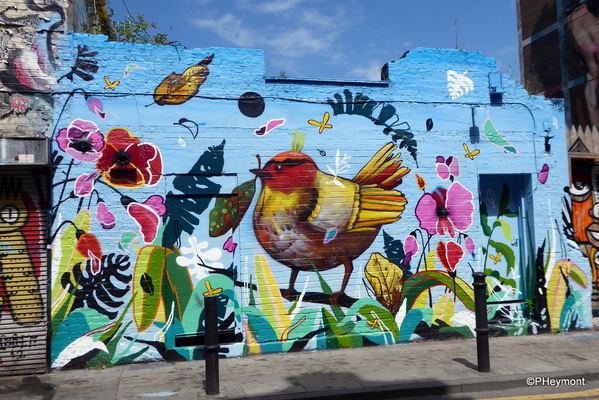
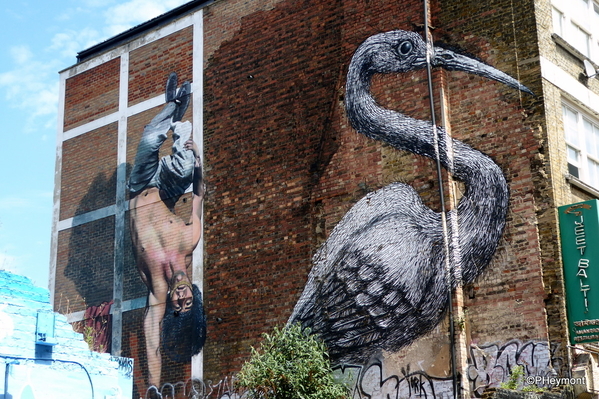
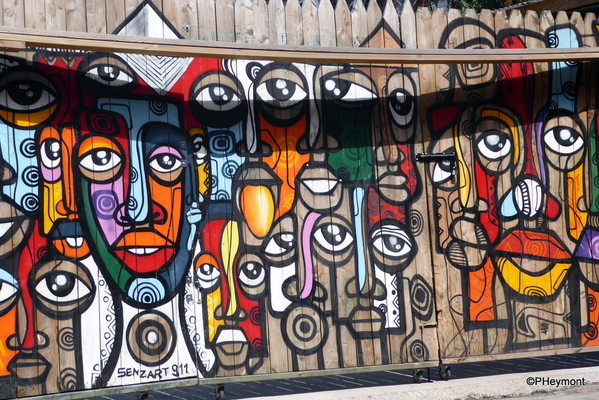
Speaking of the East End, where waves of immigrants have succeeded each other for the past two hundred years, here's a street sign showing the most current bilingual mix, a well-lettered reminder of a past wave, and a street of workers' tenements from the early 1800s that no worker could ever afford at all today as the area becomes trendy to live in. You wouldn't believe the price.
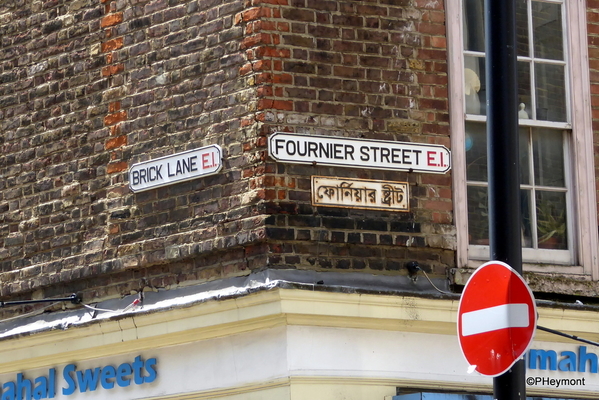
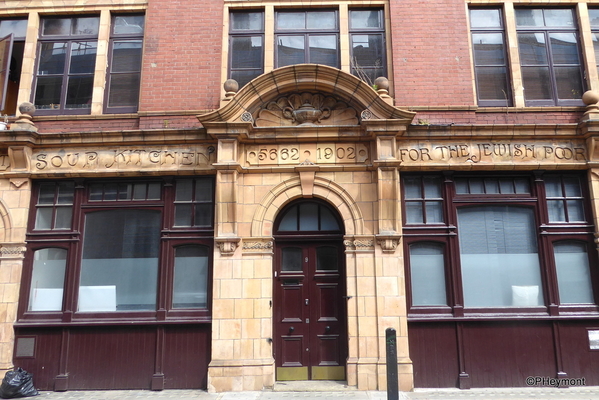
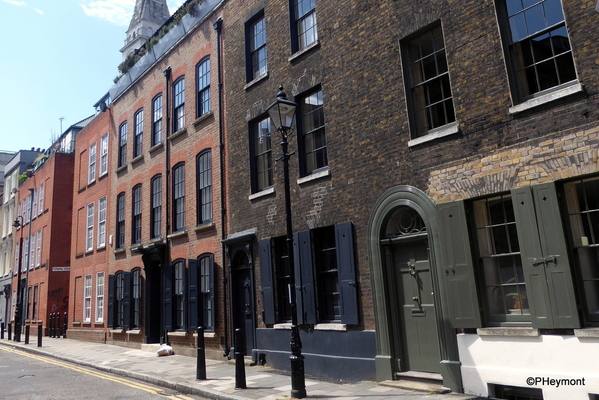
Two more buildings, one incredibly famous (St. Paul's, by Christopher Wren) and one incredibly exuberant (the Principal Hotel, by Charles Fitzroy Doll). Originally the Russell Hotel, it had ornate interiors and was the first in London that had a private bathroom in each room.
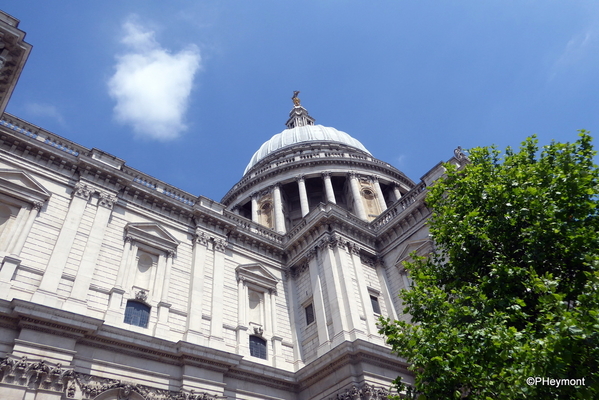
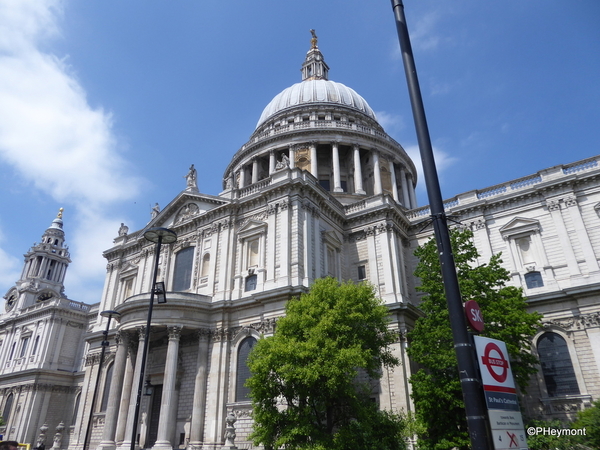
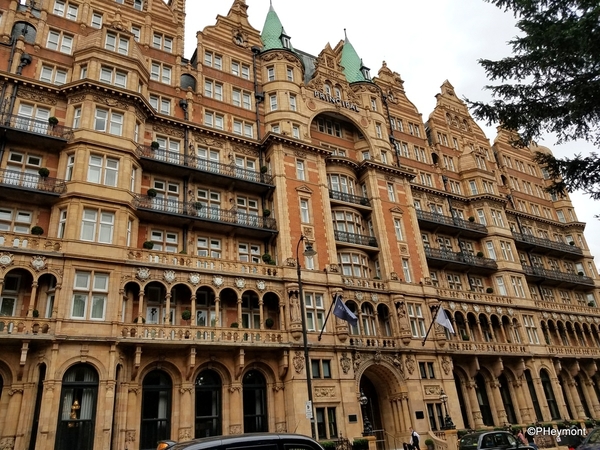 The hotel's facade features life-size statues of four English queens flanking the door, and the coats of arms of most of the world's nations (as of 1898) are on the facade, too. Doll also designed interiors for the Titanic; the hotel's restaurant and the liner's dining salon were near twins.
The hotel's facade features life-size statues of four English queens flanking the door, and the coats of arms of most of the world's nations (as of 1898) are on the facade, too. Doll also designed interiors for the Titanic; the hotel's restaurant and the liner's dining salon were near twins.
Speaking of exuberant, here are a light fixture and a gorgeous clock. Part of the fun of walking cities like London is seeing the spots where ordinary things have gone a step further.
And speaking of going further, here are a few samples from the British Museum, whose visitors come from so many countries that they put guides in more than twenty languages out on the table and have more on request.
Not to be left out, the lobby gift shop has turned a rack of small souvenirs into a reminder of the now-disappearing London phone box, and turned a collection of books into a self-supporting circle. That's all books, folks: No glue, no dowels, nothing but the two feet it stands on.
And one last moment for a glance at a monument outside Liverpool Station, remembering the thousands of unaccompanied children who arrived in London in the late 1930s, fleeing Nazi persecution, brought by the Kindertransport. Most passed through Liverpool Street on their way to "hope and safety." London is linked by them to similar monuments in the places they passed through, at railroad stations in Gdansk, Poland; Hamburg and Berlin, and at the Ferry Port in Rotterdam.

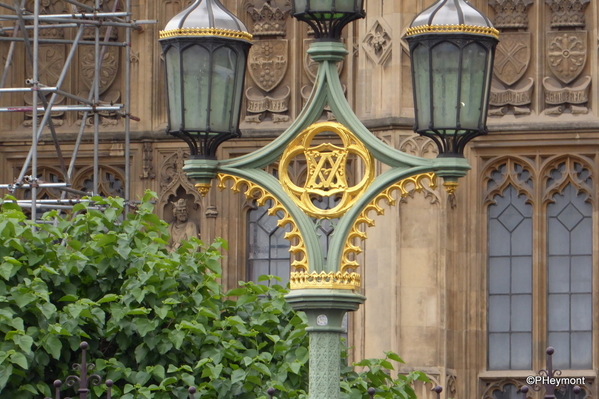
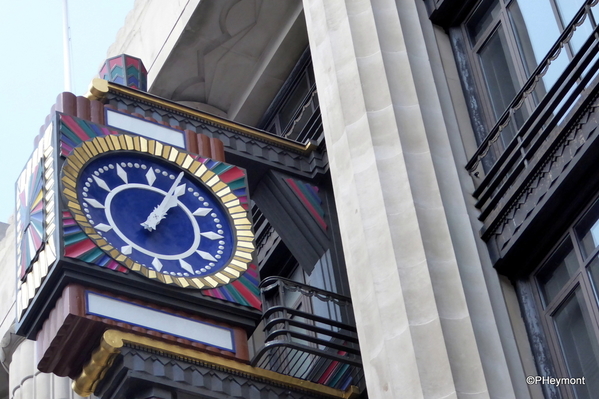
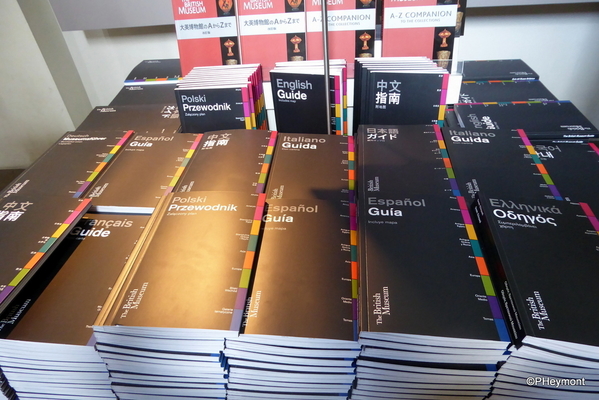
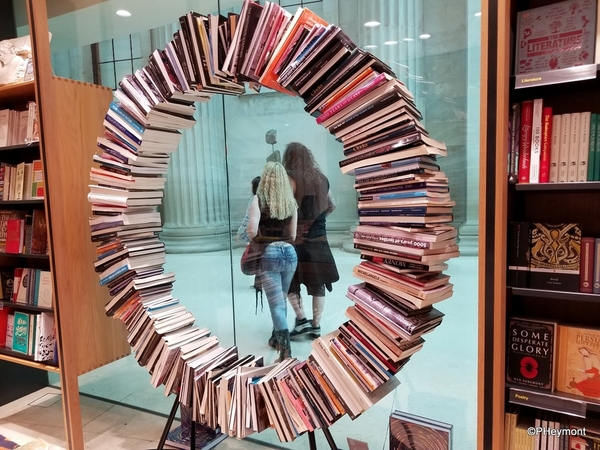
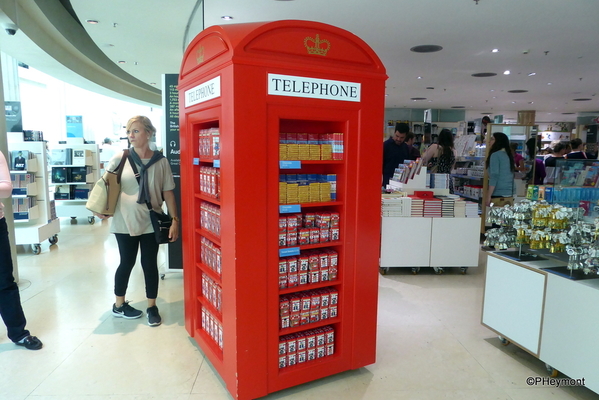
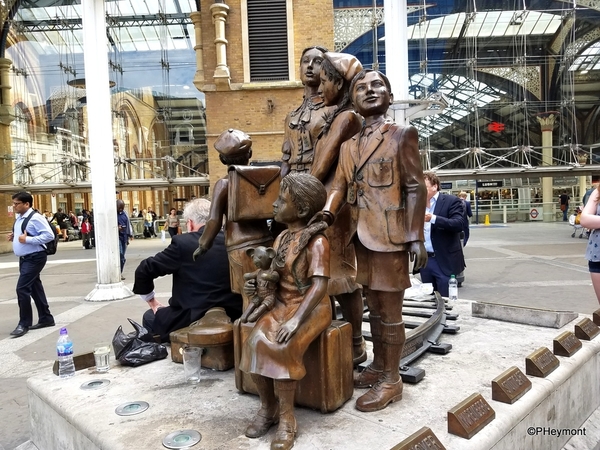















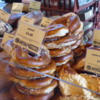












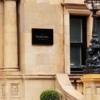











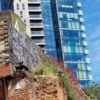
Comments (0)